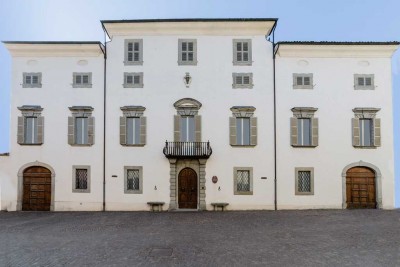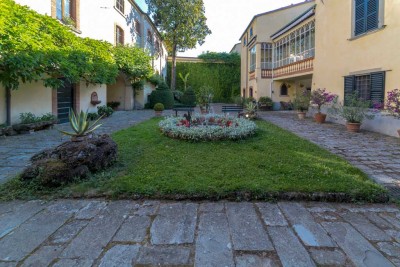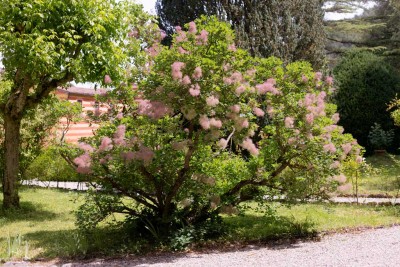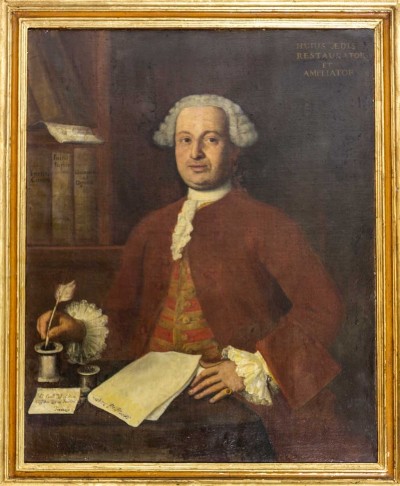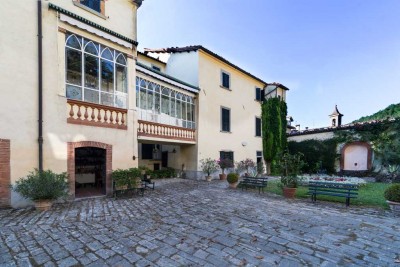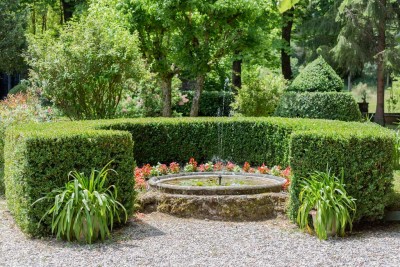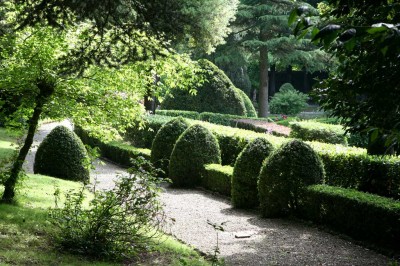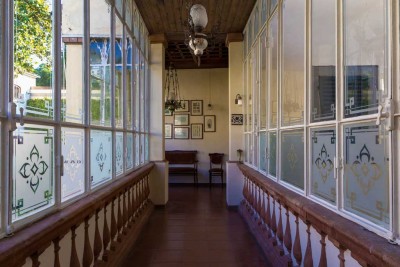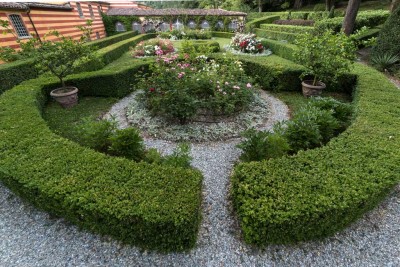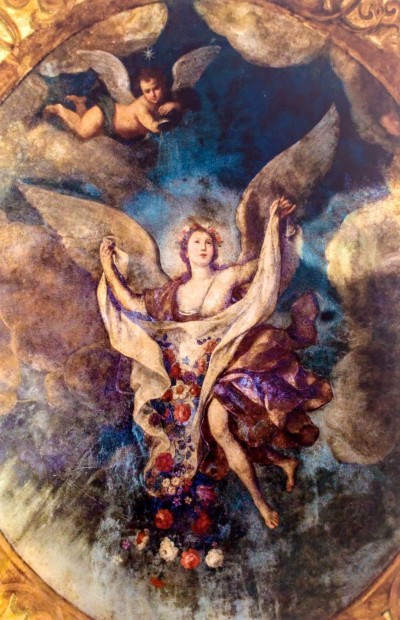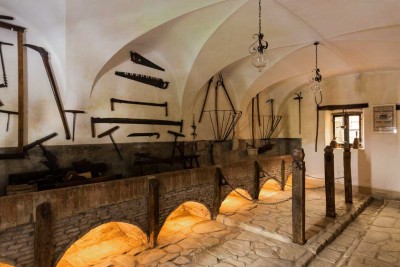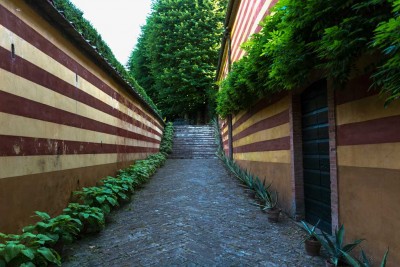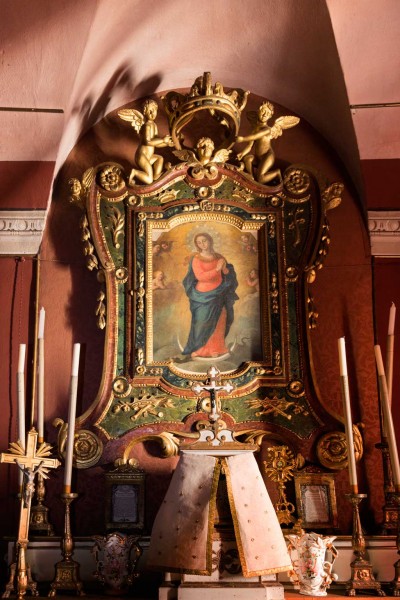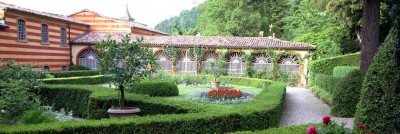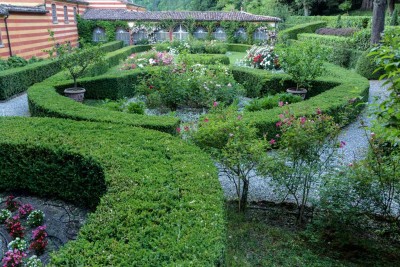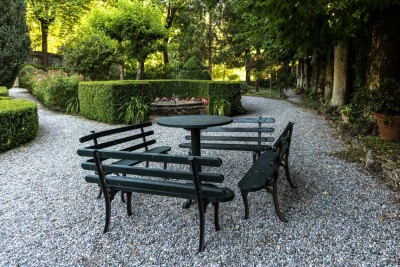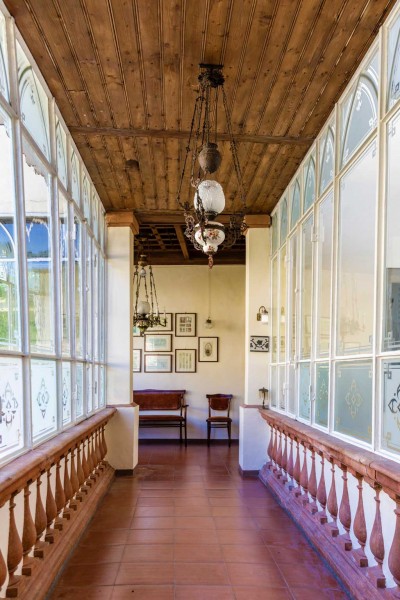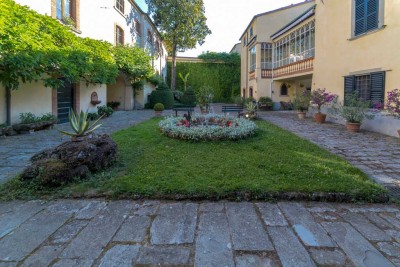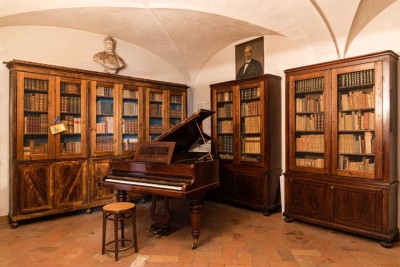Palazzo Fantini a residence from the mid-17th century, in located in Tredozio, an ancient village in the heart of the Tramazzo valley
Contact the abode
Palazzo Fantini is located in Tredozio, an ancient village in the heart of the Tramazzo Valley, historically a border area between Romagna and Tuscany, which officially became part of Romagna in 1923 during the administrative reorganisation of the region under Benito Mussolini's rule. Here, far from the hustle and bustle of the city, amidst gentle hilly landscapes, rugged roads and lush forests, traditions are still considered a precious heritage which the inhabitants of Tredozio jealously preserve and hand down from generation to generation, and from one century to the next.
It was on Via XX Settembre – the main street of Tredozio – that the first stone of the façade of Palazzo Fantini was laid on 3 May 1753, a bastion recalling the legacy of the family that has lived there for almost three centuries. The elegant and austere frontage, in the Tuscan ‘barocchetto’ style (which unified and enhanced several of the older buildings), features a balcony and the family coat of arms, a cockerel. As a patrician residence, the property was also the centre of a large agricultural estate, where various local activities were concentrated, such as silk production, hemp processing, grape harvesting, timber work, grain sorting and the raising of livestock.
Today, as in the past, the main entrance leads to a world characterised by different influences: there are the 18th-century frescoed reception rooms, and to a lesser extent, spaces adorned in neo-Gothic or Art Nouveau style (Liberty, as it is called in Italy), such as the suspended glass passageway, which was formerly a winter garden, as well as the private oratory and the library of the Fantini and Panciatichi-Fratti families, home among other things to the archives of Garibaldi's Antonio Fratti.
To the rear, the large area originally used for agricultural purposes now houses ancient tools and equipment from the agricultural activities that began in the mid-1700s, and is principally used to host private events, cultural events and concerts. Last but not least, the marvellous Italian-style garden with its lemon houses is to be found, elevated above the main floor of the house and hidden like a precious treasure. It is only accessible via a flight of steps along a wide supporting wall. Designed in the 19th century, the garden consists of Italian-style boxwood hedges, secret pathways, fountains with water lilies, beds of antique roses, and, at its highest point, a park filled with centuries-old trees and a rock garden.
The garden is part of the Great Italian Gardens circuit (i Grandi Giardini Italiani).
THE HISTORY OF PALAZZO FANTINI
Palazzo Fantini is the magnificent result of a series of constructions built over the course of the centuries. Its original structure dates back to the 17th century, but it was not until the mid-18th century that the residence assumed its current appearance, with a prestigious façade that unified all the previous buildings. On 3 May 1753, the first stone of the Palazzo's façade was laid after its foundations and the corners of the building were blessed, as is documented in the family records.
One of the key figures in its construction was Lorenzo Maria Fantini (1721 – 1782), the first of three brothers who were all sons of the late notary Diacinto Fantini. A law graduate from the University of Bologna, Lorenzo was actively involved in managing the family's rural estates. His brother Francesco Maria, a priest, obtained permission from Pope Clement XIII to erect a private chapel dedicated to the Immaculate Conception, both in the parish church and within the Palazzo. Pier Maria, a successful jurist and lawyer in Florence, was also active in the public offices of the city and, until the advent of Napoleon, served as an assessor of the Municipality of Florence.
In the preceding centuries, from the 16th to the mid-18th century, the members of the Fantini family did not live permanently in Tredozio. Having graduated in Pisa, they practiced the profession of notary with criminal as well as fiduciary functions, working together with the ‘podestà’ (local magistrates) of various centres or in the municipalities located in the northern part of the Grand Duchy of Tuscany, to which Tredozio belonged at that time. Their notarial activities, such as deeds and stipulations, have been documented in the notarial archives of Florence for over two and a half centuries, before and during the rule of Cosimo I de' Medici and beyond, and can be found in the State Archives in Florence.
In the 16th century, Benedetto Fantini, a cousin of the founder Gaspare Fantini, performed important diplomatic functions in France, Tuscany, Rome and Hungary on behalf of Duke Alfonso d'Este. In 1518, he was sent to Krakow by the Estensi family to attend the wedding of Sigismondo with Bona Sforza.
In the 19th century, following the increase in agricultural activity, barns, stables, grain storage facilities and a cellar for winemaking were built at the back of the Palazzo, where the family's wine production is still sold today. These premises are now partially used for private events, concerts and cultural occasions. The garden was designed during this same period and incorporated classic themes including secret pathways, a fountain with water lilies, precise, geometric hedges, topiary boxwoods, beds of antique roses with herbaceous stachys lanata and borders with 'old-fashioned' varieties of flowers such as dahlias and begonias, irises, viburnum and ornamental lantanas.
FACILITIES AND SERVICES: PRIVATE EVENTS AND CONCERTS AT PALAZZO FANTINI
Palazzo Fantini has been opening its doors to the public for more than twenty years now, hosting classical and jazz music concerts, art exhibitions, book presentations and literary conventions. It has become an important promoter and cultural sponsor in the area.
Various events like Emilia Romagna Festival, SaxArt Festival and other music festivals fill the summer evenings in its beautiful courtyard with a wide range of music genres, from classical to jazz to blues.
The Palazzo has also held exhibitions of contemporary sculpture in recent years, featuring works by artists such as Giuseppe Spagnulo, Ivan Theimer, Luciano Minguzzi and Berlin sculptor Richard Hess.
In addition, interesting seminars on gardens, flowers, and gardening in general are regularly held at Palazzo Fantini.
Renovated and equipped with all modern amenities, Palazzo Fantini is also an ideal venue for the following services:
- Conferences and meetings
- Showrooms and fashion shows
- Photographic services
- Presentation of product lines
- Symposiums
- Gala evenings
- Performances
- Exhibitions
- Press conferences.
